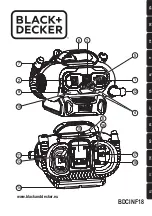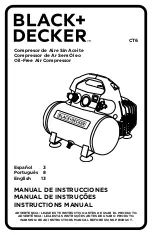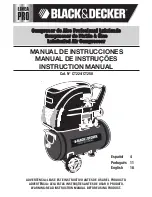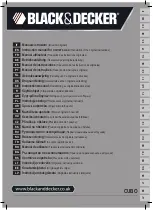
Airmac Owner’s Manual
August 2006
© Glenco Manufacturing Pty Ltd
Page 3 of 44
Rusted, cracked or damaged air receiver tanks can explode and cause death or serious
injury and must be replaced. Drain tank daily or after each use through valve located at
bottom of tank. Release compressed air from the tank before servicing. Do not weld,
drill or otherwise modify the air receiver tank.
Wear personal protection equipment such as safety glasses, ear muffs and gloves when
operating the compressor or using compressed air. Wear a face mask or respirator
when spraying, blowing down or otherwise creating airborne mists or dust.
Do not spray flammable liquids in a confined area. Do not smoke while spraying and do
not spray where sparks, flames or other ignition sources (including the compressor) are
present.
Do not direct paint or other sprayed material at the compressor. Locate compressor as
far away from the spraying area as possible to minimize overspray accumulating on the
compressor and/or clogging its air filter(s).
Motors, electrical equipment and controls can cause electrical arcs that may ignite a
flammable gas or vapour. Do not operate or repair the compressor in or near a
flammable gas or vapour. Do not store flammable liquids or gases in the vicinity of the
compressor.
Before attempting to install, maintain, repair, store or transport the compressor, switch
off the unit, tag and lock out the power supply or disconnect the engine spark plug, and
carefully release all air pressure from the receiver tank, air hoses and/or piping.
Do not permit anyone to operate the compressor without proper instruction.




































